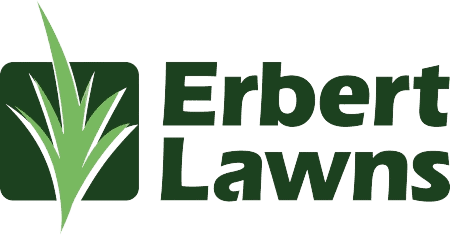Enhancing the vitality of a lawn encompasses more than just its verdant appearance; it extends to the underlying soil as well. The insights gleaned from Erbert Lawns have been invaluable in augmenting soil health, and the opportunity to impart these valuable insights is an exhilarating prospect. With an intent to delve into the subject matter, this article is poised to offer some enlightening tips. So, let us embark on this enriching journey, where the holistic aspect of a thriving lawn is illuminated through the lens of soil health optimization.
- Why Soil Health Matters
- Retains moisture: Helps during those hot summer days
- Tips to Boost Your Lawn’s Soil Health
- Understanding the Different Types of Soil
- Proper Mowing and Watering Techniques
- Warding Off Pests and Diseases
- Landscaping and Adding Beauty
- Embracing Technology
- Involve the Whole Family
- Conclusion
- Frequently Asked Questions
Why Soil Health Matters
You might be wondering, why should we even care about the soil? The USDA states that soil health is crucial for sustainability, and a healthy soil means a thriving lawn. A good quality soil:
Retains moisture: Helps during those hot summer days
- Holds essential nutrients: For our grass to grow thick and green.
- Prevents diseases: So, you won’t have to spend extra bucks on treatments.
- Promotes root growth: Which means stronger, resilient grass
Tips to Boost Your Lawn’s Soil Health
- Aerate your lawn: This means poking tiny holes in your lawn to allow air and nutrients to penetrate. Think of it like giving your lawn a nice deep breath. Find more info on aerating from the Erbert Lawns services page.
- Add organic compost: Compost acts like a multivitamin for the soil. The EPA recommends using food scraps, leaves, or grass clippings.
- Test your soil: Before adding any fertilizers, it’s smart to do a soil test. This helps to know which nutrients your soil lacks.
- Natural Fertilizers: Synthetic fertilizers can be harsh. Opt for natural ones that break down slowly and feed the soil longer. Erbert Lawns has some great natural fertilizer options.
- Maintain pH levels: Grass loves slightly acidic soil. A pH of 6 to 7.2 is just right. You can learn more about pH levels from USGS.
Understanding the Different Types of Soil
Not all soil is the same, and knowing what you have can help you take better care of it. Here’s a quick breakdown:
- Sandy Soil: Feels gritty and doesn’t hold moisture well. It needs extra care and organic matter.
- Clay Soil: This soil is heavy and retains water well. But be careful, it can become too compacted!
- Silt Soil: It’s soft and retains water but may lack nutrients. Adding compost can make it rich and healthy.
- Loamy Soil: This is the dream soil! It’s a mix of sand, silt, and clay, and most plants love it.
You can learn more about soil types from the USDA’s soil education page.
Proper Mowing and Watering Techniques
Two essential parts of lawn care are mowing and watering. It sounds simple, but here are some tips that might surprise you:
Mowing
- Mow High: Longer grass shades the soil, helping it retain moisture and grow deep roots.
- Keep the Blades Sharp: Dull blades tear grass, causing brown tips.
- Don’t Mow Wet Grass: This can lead to uneven cutting and spread diseases.
Watering
- Water Deeply but Infrequently: Deep watering encourages deep roots. Aim for an inch of water once a week.
- Water Early in the Morning: This helps prevent diseases and allows the grass to dry before night.
- Use Sprinklers Wisely: Position them so that they water your lawn, not your driveway or sidewalk.
Here’s a guide to proper watering from the EPA’s WaterSense program.
Warding Off Pests and Diseases
Just like humans, a healthy lawn has a good defense system against diseases and pests. But sometimes, it needs a little help:
- Avoid Overwatering: Standing water invites diseases and pests.
- Use Organic Pesticides: Chemicals can harm your soil in the long run.
- Monitor Regularly: Keep an eye out for any unusual spots or pests. Early detection makes treatment easier.
If pests become a problem, don’t hesitate to check out Erbert Lawns pest control services.
Landscaping and Adding Beauty
A healthy lawn is more than just grass; it’s about the whole landscape. How you design your lawn can impact its health:
- Use Native Plants: They are adapted to local soil and climate, and they require less maintenance.
- Add Mulch Around Trees and Plants: Mulch keeps the soil cool and moist and adds organic matter as it breaks down.
- Design with Water Runoff in Mind: This ensures that rainwater reaches your plants and not your streets.
Embracing Technology
In this digital age, why not let technology lend a hand? From smart sprinklers to soil sensors, tech can make lawn care a breeze:
Smart Sprinklers: They adjust watering based on weather conditions.
Soil Sensors: These gadgets tell you when your soil needs water or nutrients.
Lawn Care Apps: Many apps provide reminders and tips tailored to your lawn’s needs.
Involve the Whole Family
Finally, don’t forget to have fun with it. Lawn care can be a great family activity. Kids can help with planting, watering, and even designing the garden. Not only will you get a beautiful lawn, but you’ll create beautiful memories too.
Whether you’re a DIY enthusiast or prefer professional help, boosting your lawn’s soil health is a satisfying and rewarding journey. From understanding your soil to embracing technology, every step can make a difference. And remember, you’re not alone. There are fantastic resources like Erbert Lawns ready to assist you. So grab your gardening gloves and let’s make that lawn beautiful.
Conclusion
Boosting your lawn’s soil health isn’t as hard as it seems. With a little effort and help from professionals like Erbert Lawns, you can have the greenest lawn in your neighborhood. Want to make your neighbors green with envy? Get in touch with Erbert Lawns today!
Frequently Asked Questions
What is lawn aeration?
Aeration is the process of making small holes in the soil to allow air, water, and nutrients to reach the grass roots.
Why is soil health important?
Healthy soil retains more water, holds essential nutrients, prevents diseases, and promotes root growth.
How often should I aerate my lawn?
Typically, once a year is enough, but it depends on the type of soil and grass you have.
What type of compost is best for lawns?
Organic compost made from food scraps, leaves, or grass clippings is the best.
When is the best time to fertilize the lawn?
Early spring and fall are the best times.
How do I test my soil’s pH level?
You can buy a soil test kit from a garden store or send a sample to a lab.
Where can I get natural fertilizers for my lawn?
Erbert Lawns offers a range of natural fertilizer options.










